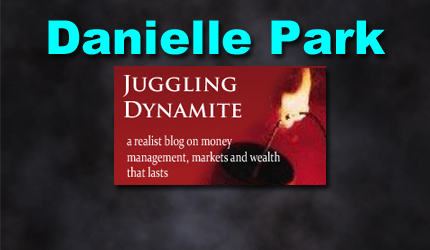July 29, 2025 | Financial Sobriety is a Rare Superpower Over Time

Speculative trading indicators measure froth in financial markets and indicate when speculators—rather than fundamental investors—are dominating market behavior.
As shown below, since 1995, the rebound in speculative measures over the past three months has been one of the sharpest on record, and in rare company with now infamous bubble tops in 1999-2000 and 2021.

The composite indicator includes:
1. Options volume skew: A high call option volume relative to puts suggests speculative fervour. Additionally, trading in single-stock options, especially those that expire the same day, provides another input.
Both have skyrocketed of late, with retail trading—especially in zero-day-to-expiration (0DTE) index options — now accounting for over 61% of total S&P 500 options volume, averaging around 2.1 million contracts daily (chart below since 2020). See: Meme stock surge underlines market froth, mostly centred on retail investors.
2. Margin debt: Rapid increases in borrowed money to buy stocks often coincide with speculative peaks. As shown below, since 1997, margin use has spiked year-to-date, similar to past tops in 2000, 2007 and 2021.
3. Retail trading volume/penny stock activity: surging activity and high turnover in low-quality or meme stocks, e.g. rewatch the 2023 movie “Dumb Money” for a refresher on how this goes.
Speculative penny stocks have exploded higher. Of the 33 stocks in the Russell 3000 that have tripled in price since April 6, only six have generated profits over the past year.
Investment banks are making off like bandits with trading revenues up 17% in the second quarter compared to the same period last year.
4. SPAC issuance and performance: explosive Special Purpose Acquisition Company (SPAC) IPO activity and extreme valuations often mark speculative excess (e.g., in 2020–2021).
Year-to-date, approximately 74 SPAC IPOs have priced, accounting for 69% of all U.S. IPOs by count and 48% by total proceeds (SPAC and US IPO activity).
5. Crypto prices and Altcoin frenzy: Parabolic moves in crypto and other ‘alternative’ assets coincide with risk-on speculative surges in broader markets.
Crypto prices are back to all-time highs, and crypto funds took in a record $12.2 billion over the past month.
6. Short squeeze and “most shorted” stock rallies: When the most shorted stocks rise the most, it’s often due to speculators coordinating squeezes, not fundamentals.
The Goldman Sachs Most Shorted Rolling Index, an equal-weighted basket of the 50 highest short-interest names in the Russell 3000 Index, is up 13% this month, compared to a nearly 2% gain for the Russell 3000 in that time, and is up over 60% since the low for the year in April.
7. Valuation Multiples (e.g., 10x+ EV/Sales)
Today, the share of global stocks trading above a 10x enterprise value/sales is the highest ever recorded (shown below, since 1999).
8. Social media and Google trends: Spikes in searches for “how to buy stocks,” “options trading,” or specific meme stocks indicate heightened speculative interest.
According to Chat GPT, search activity for “how to buy stocks” and “options trading” is currently higher than typical historical levels, though not yet at prior extremes.
9. Citi Panic/Euphoria Index: The Citi model, incorporating AAII and II with other investor surveys, is a sentiment indicator that historically signals speculative euphoria above a certain threshold.
Recent sentiment readings are back in ‘euphoria’ territory (as shown below via Yahoo Finance and ISABELNET.com in early July).
Corporate credit is also bubbling along for the ride with high yield spreads just 284 basis points above similar dated Treasuries–about half of their 525 basis point long run average spread. Investment-grade corporate yields (BB-rated and above) are just 167 basis points over similar dated Treasuries versus a long-term average spread of 346 basis points.
It’s not just retail gone wild; career risk around missing out has driven global fund managers to chase the crowd. Professionals are now holding a meagre 3.9% in cash on hand (shown below since 1999). This leaves little to fund cash redemption requests or buying opportunities when asset prices next crash.
History suggests that doing the opposite of the masses is a financial superpower over time.
Being risk-light and cash-heavy today positions us to be among the few able to capitalize on exceptional buying opportunities when the current euphoria inevitably crashes again. In the immortal words of Charlie Munger:
“When everybody goes insane, staying sane is your competitive advantage.”
STAY INFORMED! Receive our Weekly Recap of thought provoking articles, podcasts, and radio delivered to your inbox for FREE! Sign up here for the HoweStreet.com Weekly Recap.
Danielle Park July 29th, 2025
Posted In: Juggling Dynamite















